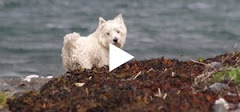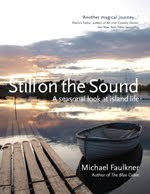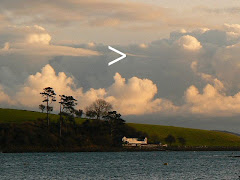I went through a Loch Ness monster phase as a teenager, and one of the more intriguing theories was put by Ted Holiday in his 1968 book, The Great Orm of Loch Ness (I should add, the subtitle was also intriguing, insomuch as I never knew - still don't - whether it was meant to be taken seriously: A Practical Inquiry into the Nature and Habits of Watermonsters). Well, a good deal of the book, as I recall, was devoted to a nagging thought at the back of the author's mind that there was something odd about the famous Surgeon's Photograph of 1936, which is still, from the point of view of monster-spotters, the most convincing-looking photograph of Nessie ever taken.
After a great deal of thoughtful study of this one image, Holiday picked up on a small disturbance in the water a little way off from the protruding head and neck; and one thing leading to another and ending in a quite arresting piece of biological reconstruction, he concluded that the creature was a giant worm - the Great Orm of the title.
Well, Holiday's fascinating book came to mind first thing this morning. To rewind a few hours: I crossed to the island late last night in a northerly gale, and as it would have been impossible to row the punt in from the mooring, decided to leave the dinghy tied to the jetty overnight, and to allow it to dry out on the foreshore. This is something I have only done two or three times in eight years, as the dinghy is quite heavy, especially with the outboard, and there are some sharp rocks close to the jetty. All I could do was try to choose a rock-free stretch, and hope for the best. During the night I checked two or three times, and all seemed well; but with daylight came the realisation that although the dinghy was ok, the punt was nowhere to be seen, as per this photograph:
I assumed that the punt had parted company with the mooring, in which case it would be miles away; but then, like Holiday, I noticed a disturbance in the water which was out of place, and as you can see from the next pic, it turned out to be the very tip of the bow which was riding the swell, disappearing and reappearing every few seconds, like a drowning man's arm - a mute but insistent cry for help.

.jpg)
.jpg)
.jpg)














